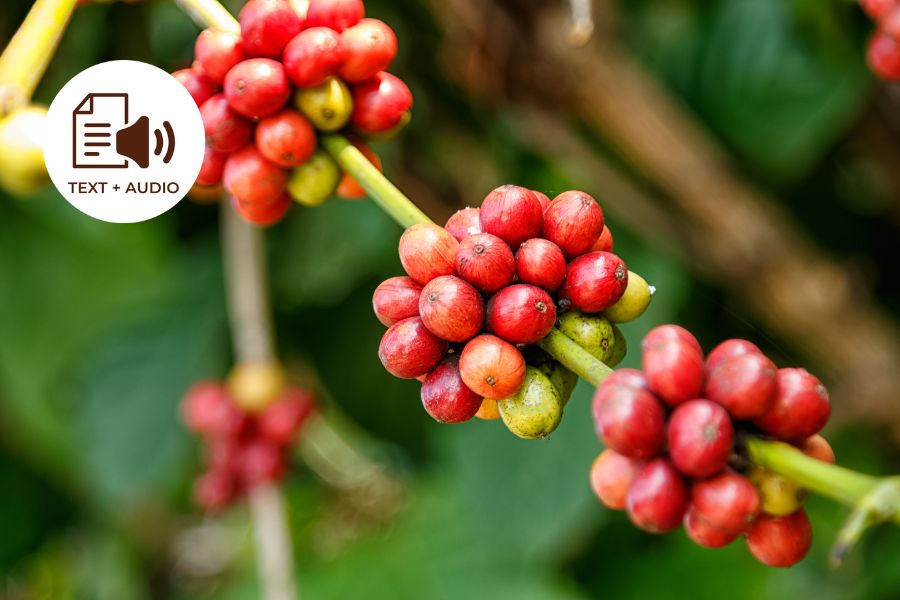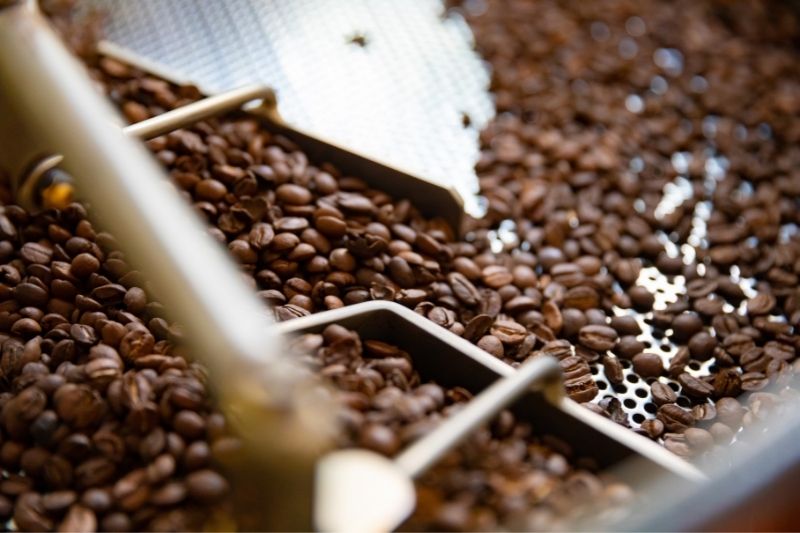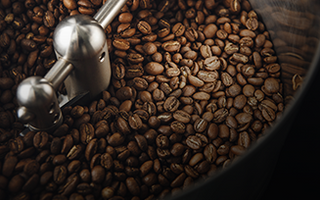Knowing the difference between Single Origin Coffee and Coffee Blend is crucial to your enjoyment. Which one is better?
In the world of specialty coffee, there are generally two varieties to choose from: single origin and coffee blend.
Single Origin Coffee
“Single origin" connotes coming from one source. This is the central concept behind single origin coffee. With the coffee being sourced from one location, either from one farm or one country, it gives the exclusivity of that region’s coffee taste and aroma.
Since this term would commonly refer to a general geographic area, it cannot be expected for single origin coffee to have been extracted from just a single variety of coffee beans. In the vastness of a coffee plantation, it’s common to find several different kinds of beans. However, because the coffee comes from just one area, the taste and aroma or its general profile is distinctly affected by the various factors and conditions peculiar to that particular region.

Theoretically, the term “single origin” should not be an indicator of quality; it simply means that the beans came from one specific region. In fact, all imported pre-roasted coffee beans arrive at their destination as single origin. However, continuing their journey to coffee shops unadulterated with their original features intact makes them more unique and, consequently, more expensive.
What Are Their Special Qualities?
When talking of single origin coffee, a specialty offering comes to mind. What qualities of single origin coffee make it stand out from blends?
Exclusivity
Since single origin coffees have this exclusive quality, they are only brewed when someone orders them. Coffee blends, on the other hand, are brewed in large batches. This also means that, with the specialness of coffee beans involved, single origin coffees offered by coffee shops are supposed to be brewed by more expert baristas. This means that experiencing the goodness of single origin coffee also entails time since baristas need more preparation to serve this type of coffee.
Limited Availability
Since single origin coffee only comes from one location, it cannot be produced in immense quantities. This means that it is typically not available year-round but only during certain seasons. For example, a coffee shop typically only features it at its peak flavor. Because it’s not always accessible, single origin coffee becomes something to wait for, look forward to, and extra relish.
Singularity
Also, since one harvest differs from another, it’s possible to get an unfamiliar taste now and then. With single origin coffee, a batch would always taste different from another. Since no two single origin coffees could be the same, it could be fun to try different harvests and compare them with one another.

This singular quality also allows coffee shops to offer variety in their menus just from the distinctly varying tastes that different batches of single origin coffee could bring. With single origin coffee boasting such uniqueness, it has been a hit among coffee shops that want their own signature coffee identity. Of course, you can expect one single origin coffee to be different from another single origin coffee, but, generally speaking, their flavor profile is always bolder, more robust, and more exotic.
Distinction (Signature)
Third-generation roasters are also meticulous about the origin of the coffee beans. Because of their traceability, single origin coffees, especially those from just one farm, have been sought after for decades. Roasters or coffee shop owners know that their beans could easily get their own identity because they only come from one source. They distinctly bear the influence of the region’s climate, geographic conditions, as well as the producer’s specific processing choices.
What Are The Advantages of Choosing It?
Supporting single origin coffee bean producers typically means providing smaller farmers with a more stable income. Not only will this allow them to provide for their families, but it will also enable them to continue investing in sustainable coffee production. As a result, coffee lovers can keep on enjoying good coffee made with increasingly better quality beans that tell a more engaging story of their origin.
Coffee Blends
On the other hand, as the name suggests, a coffee blend is a mixture of different coffee beans from various sources. This could be a mixture of coffee bean crops from different countries or regions.
Why Are They Produced?
Coffee blends cannot exist without single origin coffees because the former are just a mixture of the latter. So what’s the point of blending different coffees that are already individually good?
Consistency
Blends are roasted to produce a more consistent taste in a product. By mixing small amounts from many different coffee bean crops, large batches could be blended.
Since excessively large in volume, the resulting product could also be served in large amounts. All these large portions are from a single blend. For example, you could make coffee with a consistent taste from a mix of three different coffee bean crops of a thousand kilos each instead of three different coffees from those three crops of a thousand kilos each.

Ready Availability
Consistency in the taste of coffee blends is guaranteed because they are mixed in large batches. Because of this better accessibility, the coffee blend is the most consumed variety of coffee in the world. That is how big the market for coffee blends is.
Roaster’s Recipe
On the other hand, it would be hard to pick out the coffee beans put in coffee blends since each bean type's distinct flavors and aromas are already combined with those of others in the mix.
When mixing, intricacies depend on the roaster's output as to taste and smell. Therefore, he or she would determine how much single origin coffee to put into a blend to achieve the desired flavor. The roasting and mixing method is called "cupping." Combinations that work should have their formulae noted or memorized so that succeeding batches would be consistent in both aroma and taste.
Popular Appeal
The combination of different bean types has a taste and aroma that present a lighter but fuller-flavored coffee compared to those of single origin coffee. The various coffee beans are expected to complement each other, producing a more balanced and mellower profile. In contrast, single origin coffee has a unique taste with more pronounced attributes due to its originality.
The single origin is in its purest form. Therefore, it is not advisable to use it for milk-based drinks. On the other hand, coffee blends are usually more well-rounded working well with milk due to the complementing tastes of several coffee beans in one mix.
Another good thing about blending coffee beans is that one coffee bean crop could cancel another's negative taste. This is impossible to do with single-origin coffee. Its sharp tastes cannot be hidden or balanced with opposing or complementing flavor notes.
Nonetheless, as much as blending could disguise or subdue the not-so-preferred qualities of a coffee bean crop, it could also end up diminishing or concealing its outstanding ones.

What Are The Advantages of Choosing It?
The first thing some people will note about blends is that they’re less expensive since the production of huge batches allows for reduced and controlled costs.
Also, low-quality beans may be included in the mix, but if the coffee producer has perfected the art of the blend, the consumer will never know. The undesirable traits are muted with masterful blending, and the in-demand features are emphasized.
Coffee blends are also more forgiving when brewed. Unlike single origin, they don’t require as much skill to brew correctly.
What’s the Rule of Thumb?
Coffee experts recommend single origin coffee for those who want brewed coffee and blends for those who prefer espresso.
The natural characteristics of single origin coffee are best represented in brewed coffee. Meanwhile, creating good espresso using single origin coffee is quite tricky since the brewing method is rather harsh. This makes single origin coffee’s already pronounced features even more amplified.
On the other hand, making espresso with blends allows the different coffees to make their complementing characteristics work in harmony, creating a well-rounded drink.
So, Which One is Better?
In choosing to drink single-origin coffee, think about traveling around the world and getting to know the best coffee from every country. However, considering the strong taste of single-origin, which cannot be remedied by mixing in milk, sweetener, or other “condiments,” it’s probably not the best place to start for those new to drinking coffee. Also, those who want to the same consistent taste from their morning coffee would do best with a coffee blend.
At the end of the day, it really boils down to personal preference, no matter if you’re a newbie or a veteran coffee drinker. Both have winning qualities and are wonderful in their own right. So there would really be no universal answer to the question.
Click here to see list of our Single-Origin Coffee
Click here to see list of our Premium Blend Coffee
Get Free Bonus Books

Sign up for free to the Coffee Club to get advice and exclusive articles about how to choose Japanese Coffee, and tips, tricks, and recipes for enjoying Japanese coffee.
About the author
Kei Nishida
Author, CEO Dream of Japan
Certification: PMP, BS in Computer Science
Education: Western Washington University
Kei Nishida is a passionate Japanese tea and coffee connoisseur, writer, and the founder and CEO of Japanese Coffee Co. and Japanese Green Tea Co., both part of Dream of Japan.
His journey began with a mission to introduce the world to the unparalleled quality of Japanese green tea. Through Japanese Green Tea Co., he established the only company that sources premium tea grown in nutrient-rich sugarcane soil—an innovation that led to multiple Global Tea Champion awards.
Building on this success and his passion for Japanese craftsmanship, Kei expanded into the world of coffee, pioneering the launch of Japanese Coffee Co., the first company to bring Sumiyaki charcoal-roasted coffee to a global audience. His dedication to authenticity and quality ensures that this traditional Japanese roasting method, once a well-kept secret, is now enjoyed worldwide.
Beyond tea and coffee, Kei has also introduced Japan’s legendary craftsmanship to the world through Japanese Knife Co., making handmade katana-style knives—crafted by a renowned katana maker—available outside Japan for the first time.
Kei’s journey continues as he seeks out and shares the hidden treasures of Japan, one cup and one blade at a time.
Learn more about Kei













